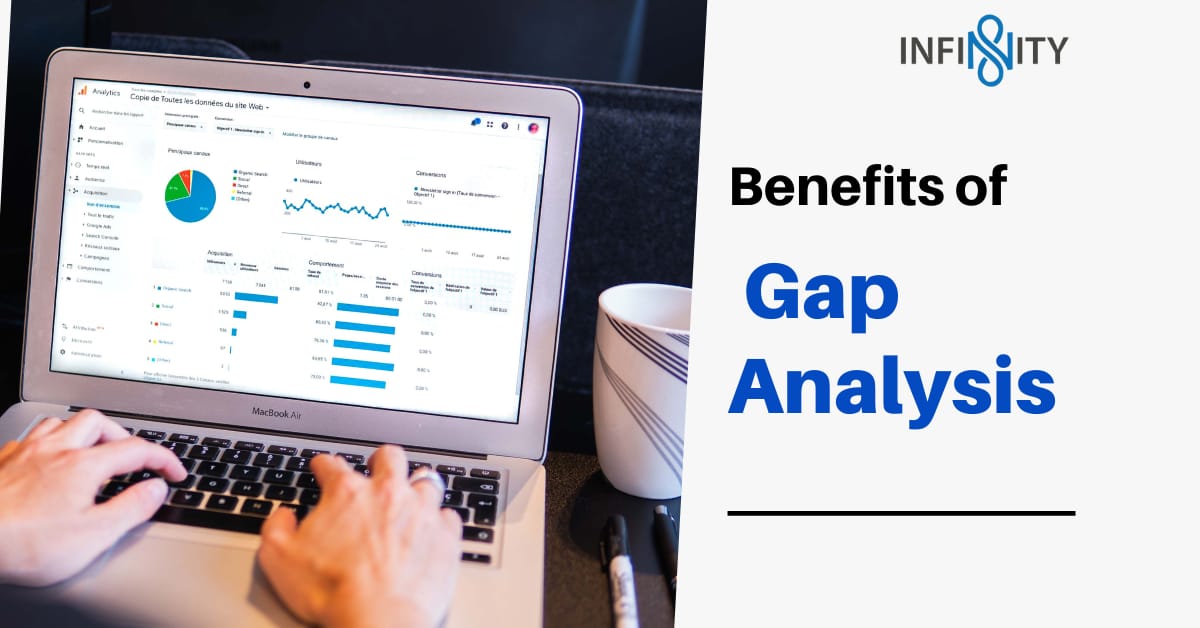
Benefits of year-end closing and annual plan
12 November، 2021
Consulting Firms: Best Solution for Business Strategy & Operational Management Success
3 December، 2021Benefits Of Gap Analysis

What Is a Gap Analysis?
A gap analysis provides an in-depth look, examine both expected and current business practices, and determine what you need to grow your business. The gap analysis answers where your company is now, where you would like it to be and how to get there. You can take advantage of a gap analysis to improve sales, get certifications, put into effect new business segments, move into new markets, unveil new products, improve your customer service, and many more.
Benefits
External benchmarking
Benchmarking is comparing documented results of a specific product or process against external standards. For instance, a firm may want to evaluate the implementation of a quality management system with other quality management standards. In addition, Benchmarking gives you a chance to review if things are working effectively at your company, thereby, making better use of company resources and finances.
Profit percentage analysis
The gap analysis determines the reason why the goal is not met. The reason may be anything from poor resource allocation, unanticipated competition, or other factors and gap analysis can assist in understanding the reason.
Process improvement

Every company uses processes. The gap analysis can assist in revealing the areas of improvement for all kinds of processes and aid to link the gap between actual and expected outputs.
Understanding key performance indicators
Gap analysis helps you to understand KPIs such as client acquisition, return on investment, and sales targets. For example, a sales team could investigate the reasons of missing quarterly goals, and plan appropriately.
Identifying gaps in the market
Performing a gap analysis will help you find the difference between the current and potential market size for a product or service and can also assist you in understanding how and why you are not reaching your full market potential.
Common gap analysis examples

The gap analysis method can be used in all types of situations and business areas. The illustrations below show the wide range of applications your enterprise can find for performing a gap analysis.
Launching a new product
A gap analysis can help you to find leads or after you launch a new product. For example, looking at the existing feature and assessing it with design goals or why sales were not as good as expected.
Productivity in a factory
A gap analysis will help you concentrate on optimization efforts and understand customer needs or specific business requirements involving factory productivity.
Supply chain management
Gap analysis in supply chain management will keep you updated on critical information, and you can know what changes you have to make to drive your supply chain strategy.
Sales teams
You can perform sales gap analyses through a thorough examination of the sales process from the buyer’s perspective. For instance, there may be a missed opportunity that you can uncover with a gap analysis. Therefore, a sales gap analysis may uncover factors like brand image and reputation that are affecting sales.
Performance gap analysis
It refers to a high-level analysis of company goals, how far a company has reached its goals and what it can do to accomplish the desired goals.
Elements of a Gap Analysis
- There are four elements of a gap analysis:
- Ascertain the current state of your business.
- Find out what you want your business to look like within a timeframe.
- Identify the gap between the current state and what you want it to be.
- Formulate a strategic plan to eliminate the gap, including a budget and timeframe.
To get the maximum benefit of a gap analysis, you should do it for different business segments instead of your entire firm. Then you can focus better and track your endeavours, emphasizing the significance of your performance gap analysis. The gap analysis can vary from company to company or industry, but it is a valuable way to provide a detailed look at your business and help it flourish. It allows the detection of problems instantly and creates ways to solve those challenges by strategizing what you want your organization to look like. IMCC use different Gap Analysis tools such as SWOT, FMEA, McKinsey’s 7-S model, Nadler-Tushman model, Fishbone diagram etc. to help clients.
For more info, log on to www.infinitykw.co.
